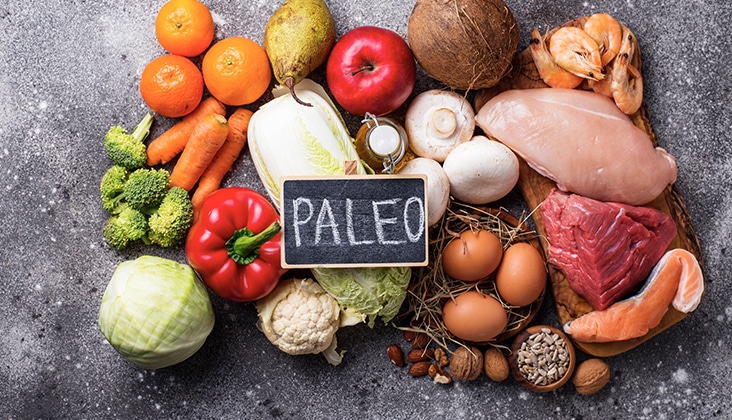How Diet Affects Oral Health
As healthcare providers, dental hygienists help improve patients’ oral and systemic health through education.

As healthcare providers, dental hygienists help improve patients’ oral and systemic health through education. Medical history review, oral examination, and a nutritional assessment enable dental hygienists to identify behaviors or components of a patient’s diet that cause or contribute to oral disease. Taking a nutritional history is an important part of the dental hygiene process of care, as it allows oral healthcare providers to assess an individual’s risk for potential nutritional deficiencies based on dietary choices.1 Patient education should focus on the treatment and/or prevention of disease through oral hygiene practices and diet and nutritional counseling.
Photo Credit: Aamulya / iStock / Getty Images Plus

Caries and Diet
The relationship between diet and caries is well documented, yet, the consumption of fermentable carbohydrates remains a significant factor in caries development. Disaccharides (sucrose) are carbohydrates found in foods such as candy, sweets, and soda. For many years, sucrose was thought to be the most cariogenic substance; however, current research shows that polysaccharides (starch), when combined with sucrose and monosaccharides (simple sugars such as glucose), are equally detrimental to tooth structures. Reducing or eliminating these types of foods is ideal especially for high-risk patients. Encouraging patients to make changes, such as rinsing with water after the consumption of a carbohydrate-containing food, chewing xylitol-containing gum, and maintaining good oral hygiene practices will help offset the impact of fermentable carbohydrates on tooth structures.
Photo Credit: domoyega / E+

Nutrition and Periodontal Health
Periodontitis is a bacterial disease characterized by bleeding, inflammation, and loss of bone and supporting structures. The prevention, treatment and management of any disease, including periodontal inflammation, relies on the normal function of the immune system, which is supported by proper nutrition. While chronic deficiencies are more apparent, subtle, acute deficiencies are difficult to detect and their impact on the periodontium is less obvious. As the oral mucosa is often the first tissue to show signs of nutrient deficiencies or excesses, dental hygienists must be aware of the role nutrition plays in oral health.
Photo Credit: AlexRaths / iStock / Getty Images Plus

Ketogenic Diet
One of the more recent diet trends is the ketogenic diet, also known as keto. Often categorized with the Atkins diet, keto is a high-fat, moderate-protein, low-carbohydrate plan. By significantly restricting carbohydrates to 50 g or less per day, the body goes into metabolic physiological ketosis. This is different than the pathological form of ketosis that affects individuals with uncontrolled diabetes. Ketogenesis initiates the breaking down of fats into ketones, which the body then uses as its energy source. When the body burns ketones, it produces acetone, acetoacetate, and beta-hydroxybutyrate. The body flushes out these ketones through exhalation and urination. This can lead to the unpleasant side effect of fruity smelling or acetone scented “keto” breath and xerostomia. When the body breaks down protein, it also produces ammonia, which is eliminated through urination and exhalation. Ammonia can contribute to oral malodor as well.
Photo Credit: samael334 / iStock / Getty Images Plus

Paleo Diet
This eating pattern is often compared to the keto diet, although there are significant differences between the two. Where the keto diet is heavily focused on fat intake, the Paleo diet is primarily a plant-based plan. The diet focuses on eating significant amounts of nutrient-dense foods such as vegetables and fruits, lean meats, and seafood, and eliminating inflammatory foods such as grains, dairy, refined sugars, refined oils, and processed foods. In a study by Frassetto et al subjects who followed a Paleo diet for as little as 2 weeks, showed “improvements in blood pressure and glucose tolerance, a decrease in insulin secretion and an increase in insulin sensitivity, and a great improvement in their lipid profiles.” However, with the elimination of grains and dairy, intake of fiber, protein, and calcium may be decreased, all important nutrients for periodontal health. By encouraging the increased consumption of green leafy vegetables and lean animal meats, deficiencies are unlikely.
Photo Credit: yulka3ice / iStock / Getty Images Plus

Intermittent Fasting
Another common dietary practice is intermittent fasting, an eating pattern in which food intake is limited to a specific number of hours per day. Although a common practice in many ethnic cultures and religions, it recently has become a diet fad used for weight loss. A common pattern is 16:8; however, a variety of methods are used based on personal preference. In the 16:8 intermittent fasting pattern, the person eats during a designated 8-hour time frame and then fasts for the remaining 16 hours. This pattern usually follows the circadian cycle, which has been shown to increase weight-controlling hormones, such as human growth hormone and ghrelin. Overnight fasting increases gluconeogenesis, which is the conversion of noncarbohydrate sources into energy, including fat. Limiting the eating phase to only 8 hours decreases the length of time the saliva pH drops to an acidic level. During the fasting state, there is a restriction of food and caloric beverages but drinking water is strongly encouraged. Remaining hydrated eliminates xerostomia and helps with normal saliva production, buffering the effects of low pH.
Photo Credit: erdikocak / E+

Vegetarian/Vegan Diet
There are many types of vegetarian diets, and individuals often choose one based on personal or religious beliefs or due to ethical reasons. For example, a lacto-ovo vegetarian will eat dairy, such as eggs and cheese, but avoids meat, fish, and poultry. A lacto vegetarian is similar but eliminates eggs. Meanwhile, a vegan eliminates all animal products entirely. The Academy of General Dentistry notes that patients who follow a vegan or a vegetarian diet may have deficiencies in vitamin D, calcium, vitamin B12, and riboflavin. The lack of calcium and vitamin D could result in tooth and bone loss as well as preventing remineralization of susceptible tooth surfaces. Even though vitamin D can be obtained through sunlight and a deficiency is rare, it can occur in people who do not consume milk or fish and avoid or limit sun exposure. Vitamin B12 (cobalamin) is found in meat, eggs, and dairy products. Glossitis, angular cheilitis, recurrent ulcers, and oral candidiasis are among some of the indicators of a vitamin B12 deficiency. Oral health professionals can recognize these signs early and refer for treatment.

